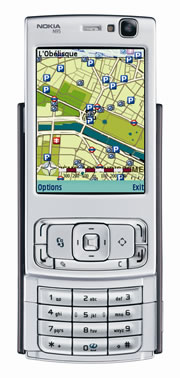With Internet connectivity the norm, WiFi built into every phone, DLNA ensuring seamless interoperability, and web servers being designed for mobile phones, 2007 might finally be the year that MobSharing becomes a reality.
MobSharing was something I first wrote about back I first started MobileMentalism. It’s basically a way for people to share music and other media files over a WLAN situated at a place where people gather, such as your local StarBucks.
The idea is that you’re able to open the tunes you have on your mobile phone to those around you connected to the same network, and obviously you can see their tunes as well, and share at leisure.
Go to your local shopping mall, drift into Starbucks, see what files are there. Always different, always changing. Don’t like what’s there? Do your shopping, come back for a coffee, see what files are there now. Constant novelty, constant surprise. Hunter-gatherer in the 21st century! Music industry transformed, shopping malls transformed, society enriched, and all thanks to the humble mobile phone.
Back in 2005, when I first wrote about it, I picked StarBucks as an example, as you need a high speed Internet connection to support the service, and StarBucks are usually WiFi hotspots. However, with new mobile phones having flat-fee HSDPA, you don’t need WiFi support any more (although it’s useful!).
So as long as DRM doesn’t get in the way, there’s no reason for some bright spark to develop a MobSharing app that you can upload onto your mobile phone, enabling true P2P file sharing across your mobile phones, with the tunes you can download changing according to the users and then tunes on their phones that are nearby.

We have the camera phone, the video phone, the smartphone, the business phone, the music phone, the sports phone, even the phone that can monitor a woman’s menstrual cycle! Is there anything new to be added to a mobile phone?
Well, Nokia think there is with their Nokia N95 (left), which features not only SatNav, but an innovative way of integrating its features into the use of a phone as a lifestyle device.
Just as the camera phone changed the way we used cameras, particularly with its integration with web sites such as Flickr, so GPS and other technologies on a device that’s always with you can fundamentally change the way we use that device.
In short, SatNav for a person is a completely different proposition than SatNav for a car, with the emphasis being on finding people as much as places.
Expect other manufacturers to follow suit, and innovative new location-aware services emerging to support the use of GPS in mobile phones. Google, in particular, will offer more location-aware services, ready for the introduction of their Orange Googlephone (not to mention their push into the mobile-specific advertising space).